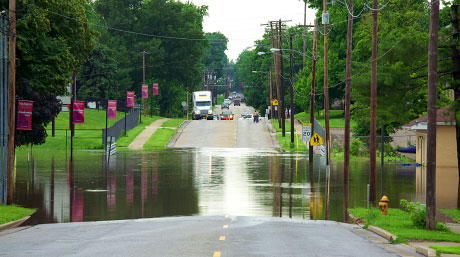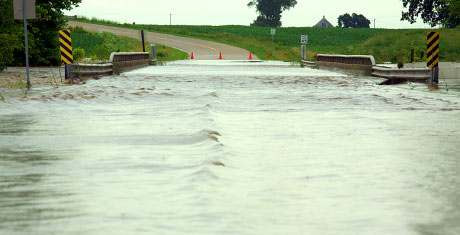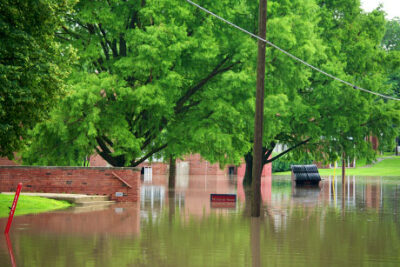The City of Jacksonville is looking into taking care of a decades-old problem along the Town Brook. On the evening of June 17th and the morning hours of June 18th, 2011, the east end of Jacksonville flooded to disastrous proportions – washing out roads, homes, and MacMurray College as well as the city’s former Water Treatment Plant on East Superior Avenue for the better part of several days, leaving the city without potable water for several days. The north end of Jacksonville along Mauvaisterre Creek flooded into the city’s Wastewater Treatment Plant as well. It was flooding that the city had not seen since the 1970s. The town has historically had problems with flooding dating back to at least the 1920s.
Shortly after, the city began a mitigation plan to try to prevent flooding of that magnitude from happening again. The city met with the Illinois Department of Natural Resources over the course of the last decade to find mitigation efforts that were both affordable and doable for the city within their budget.

IDNR’s Water Resources Team met with the city council again this past Monday and presented a hydraulic model layout of a 100-year flood within the city’s limits . The survey calculated average annual damages and the effects it would have on homes and structures within the 100-year flood plain. The primary damages to the city lie in Ward 2 on the east side, effecting approximately 276 structures.
The plan provided 10 alternatives ranging in cost from $1 million to over $14 million dollars. The plans range from installing larger culverts, installing new storage reservoirs, dredging and widening banks, buying out buildings and demolishing them, to installing flood walls and levees.

Ward 2 Alderwoman Lori Large-Oldenettel says completing the project through one of the options is a health, life, and safety issue for the people of her ward: “All of the options they gave us would be to either slow the water down or make the water [go through the brook] faster so that it doesn’t back up into the city, which is one of our primary concerns when we originally started talking about the Town Brook project. We wanted to come up with ways to reduce flooding so that our life-safety vehicles would have access to all roadways that they need to have in order to help people.”
Oldenettel says some crucial streets and roads through the city are impassable during torrential downpours and flash flooding from the Town Brook: “As we know, when it floods [in town], often times Hardin Avenue floods, Johnson Street floods, sometimes Old Jacksonville Road also floods. It really hampers the life-safety vehicles to have access to everyone that they need to get to when we have that type of flooding in the City of Jacksonville.”
According to the report completed by IDNR Project Engineer Tom Maloney, the alternative that likely presents the best cost-benefit ratio to the city is installing two new culverts at the railroad crossings of the Town Brook near the Gordon Facilities Complex on the MacMurray campus and further up stream north of Routt Street. The plan would reduce damage to 24 structures, and remove 73 structures from the 100 year flood plain. It would also reduce expected damages in a 100 year flood by several thousands of dollars.
Oldenettel says though that the whole council will look at all of the plans before making a decision: “It will have to come back to the City Council to discuss and see which alternative makes the most sense for the City of Jacksonville. I’m sure that we also want to get some information from of our local engineers, as well, just moving forward to see which one makes the most sense.”
IDNR Representatives at the meeting says that if the cost-benefit ratio is high enough for the project the city selects, there is $2.5 million available to the city to cover cost of the construction.




